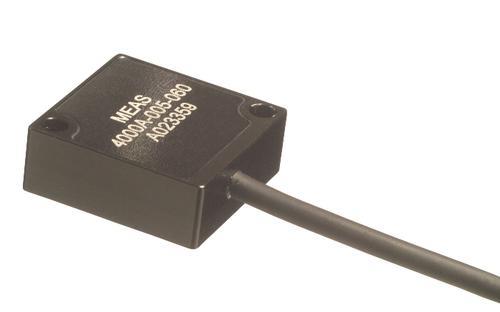What is an Accelerometer Sensor?
Working Principle of Accelerometer Sensor
The principle of the accelerometer sensor is Newton's second law, the law of acceleration, which is the balance of force, A (acceleration) = F (inertial force) / M (mass). We only need to measure F. How? Just use electromagnetic force to balance this force. The relationship between F and current can be obtained. Only need to use experiments to calibrate this proportional coefficient. Of course, the signal transmission, amplification, and filtering in the middle are the matter of the circuit.
Most accelerometer sensors work according to the principle of the piezoelectric effect.
The so-called piezoelectric effect is "for a heteropolar crystal without a centre of symmetry, the external force applied to the crystal will not only deform the crystal, but also change the polarization state of the crystal and establish an electric field inside the crystal. This is due to mechanical force. The phenomenon of polarizing the medium is called the positive piezoelectric effect.
The general accelerometer sensor uses the character of crystal deformation caused by acceleration. Since this deformation generates voltage, as long as the relationship between the generated voltage and the applied acceleration is calculated, the acceleration can be converted into a voltage output. Of course, there are many other methods to make accelerometer sensors, such as piezoresistive technology, capacitance effect, thermal bubble effect, light effect, but the most basic principle is that a certain medium is deformed due to acceleration, and the deformation is measured and used. The related circuit is converted into a voltage output. Each technology has its own opportunities and problems.
Piezoelectric technology is mainly used in industry to prevent machine failures. Using this sensor can detect potential machine failures to achieve self-protection and avoid accidental injury to workers. This sensor is sought after by users, especially users in the quality industry. The reproducibility, stability and self-generating nature.
When using an accelerometer sensor, sometimes the output signal is distorted when measuring in low-frequency occasions, and the cause of the failure can not be found for a time using multiple measurement judgment methods. After analysis and summary, the main factor that causes the measurement result to be distorted is: poor low-frequency response of the system, The low-frequency signal-to-noise ratio of the system is poor, and the influence of the external environment on the measurement signal. Therefore, as long as there is a distortion of the low-frequency measurement signal of the accelerometer sensor, compare the above three points to see which factor is causing it, and solve it in a targeted manner.
Types of Accelerometer Sensor
1. Piezoelectric Accelerometer Sensor
A piezoelectric accelerometer sensor is also called a piezoelectric accelerometer. It is also an inertial sensor. The principle of the piezoelectric accelerometer sensor is to use the piezoelectric effect of piezoelectric ceramic or quartz crystal. When the accelerometer is vibrated, the force applied by the mass to the piezoelectric element also changes. When the measured vibration frequency is much lower than the natural frequency of the accelerometer, the force change is proportional to the measured acceleration.
2. Piezoresistive Accelerometer Sensor
Based on the world's leading MEMS silicon micromachining technology, the piezoresistive accelerometer sensor has the characteristics of small size, low power consumption, etc., easy to integrate into various analogue and digital circuits, and is widely used in automobile crash experiments, test instruments, equipment vibration monitoring, etc. field.
3. Capacitive Accelerometer Sensor
The capacitive accelerometer sensor is a capacitive sensor with a variable pole pitch based on the principle of capacitance. A capacitive accelerometer sensor/capacitive accelerometer is a more general accelerometer sensor. There is no substitute in some areas, such as airbags, mobile phones and mobile devices. The capacitive accelerometer/capacitive accelerometer adopts the micro-electromechanical system (MEMS) process, which becomes economical in mass production, thus ensuring a lower cost.
4. Servo Accelerometer Sensor
The servo accelerometer sensor is a closed-loop test system, which has the characteristics of good dynamic performance, large dynamic range and good linearity. Its working principle, the vibration system of the sensor is composed of the "MK" system, which is the same as the general accelerometer, but an electromagnetic coil is connected to the mass m. When there is acceleration input on the base, the mass deviates from the equilibrium position. The displacement sensor detects it and is amplified by the servo amplifier and converted into a current output. The current flows through the electromagnetic coil and generates an electromagnetic restoring force in the magnetic field of the permanent magnet, trying to keep the mass in the original balance position in the instrument housing, so The servo accelerometer sensor works in a closed-loop state.
Due to the feedback function, the anti-interference ability is enhanced, the measurement accuracy is improved, and the measurement range is expanded. The servo acceleration measurement technology is widely used in inertial navigation and inertial guidance systems and is also used in high-precision vibration measurement and calibration.




